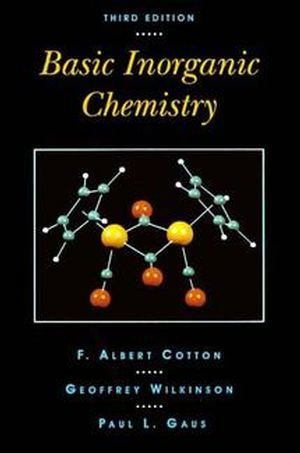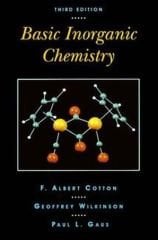Basic Inorganic Chemistry
Explains the basics of inorganic chemistry with a primary emphasis on facts; then uses the student's growing factual knowledge as a foundation for discussing the important principles of periodicity in structure, bonding and reactivity. New to this updated edition: improved treatment of atomic orbitals and properties such as electronegativity, novel approaches to the depiction of ionic structures, nomenclature for transition metal compounds, quantitative approaches to acid-base chemistry, Wade's rules for boranes and carboranes, the chemistry of major new classes of substances including fullerenes and silenes plus a chapter on the inorganic solid state.
Contents:
FIRST PRINCIPLES.
Some Preliminaries.
Structure and Bonding in Molecules.
The Chemistry of Selected Anions.
Solvents, Solutions, Acids, and Bases.
THE MAIN GROUP ELEMENTS.
Hydrogen.
The Group IIA(2) Elements: Beryllium, Magnesium, Calcium, Strontium, and Barium.
The Group IIIB(13) Elements: Aluminum, Gallium, Indium, and Thallium.
The Group IVB(14) Elements: Silicon, Germanium, Tin, and Lead.
The Group VB(15) Elements: Phosphorus, Arsenic, Antimony, and Bismuth.
The Group VIB(16) Elements: Sulfur, Selenium, Tellurium, and Polonium.
The Noble Gases.
TRANSITION ELEMENTS.
Introduction to the Transition Elements: Ligand Field Theory.
The Elements of the Second and Third Transition Series.
The Actinide Elements.
SOME SPECIAL TOPICS.
Organometallic Compounds.
Bioinorganic Chemistry.
Appendices.
Glossary.
Index.


